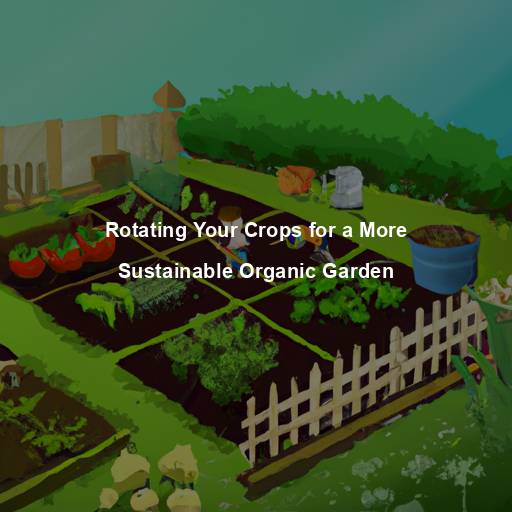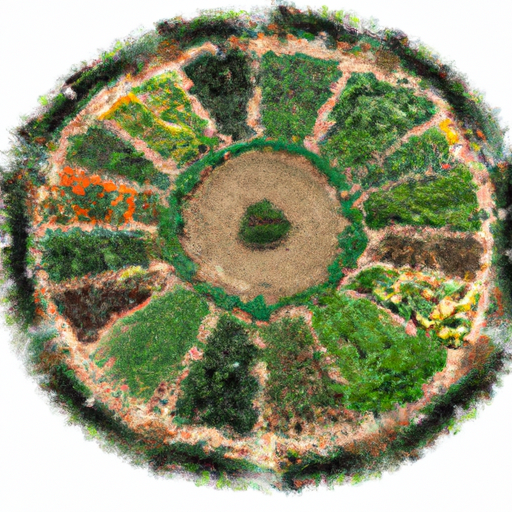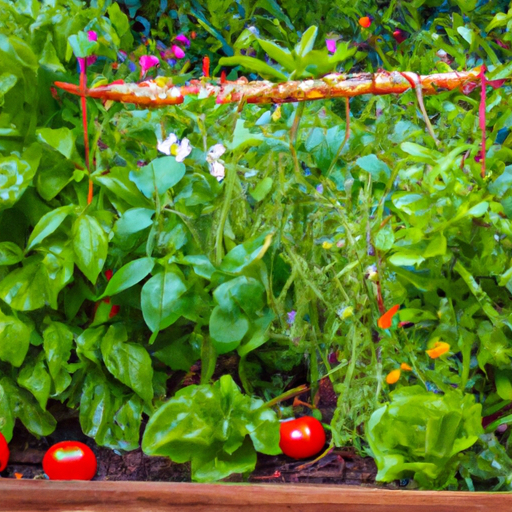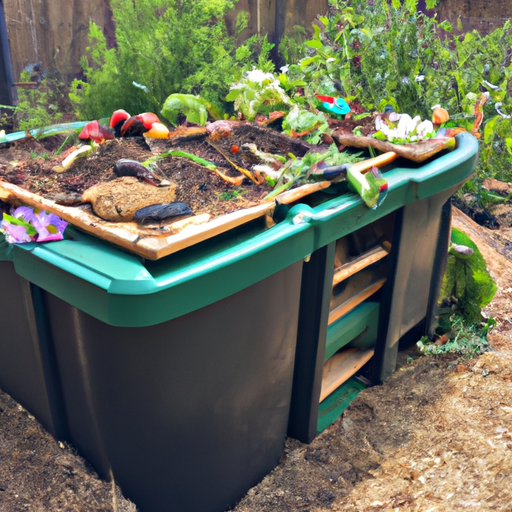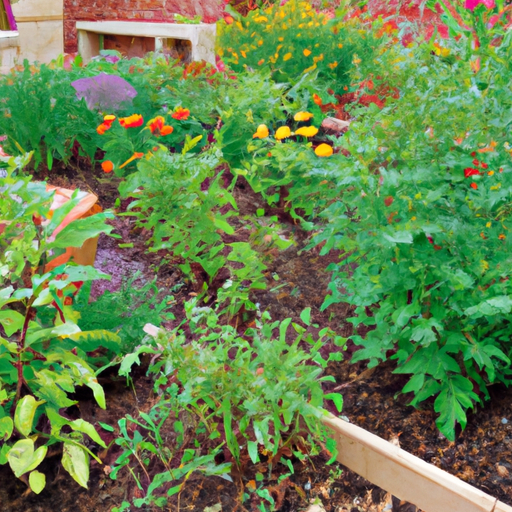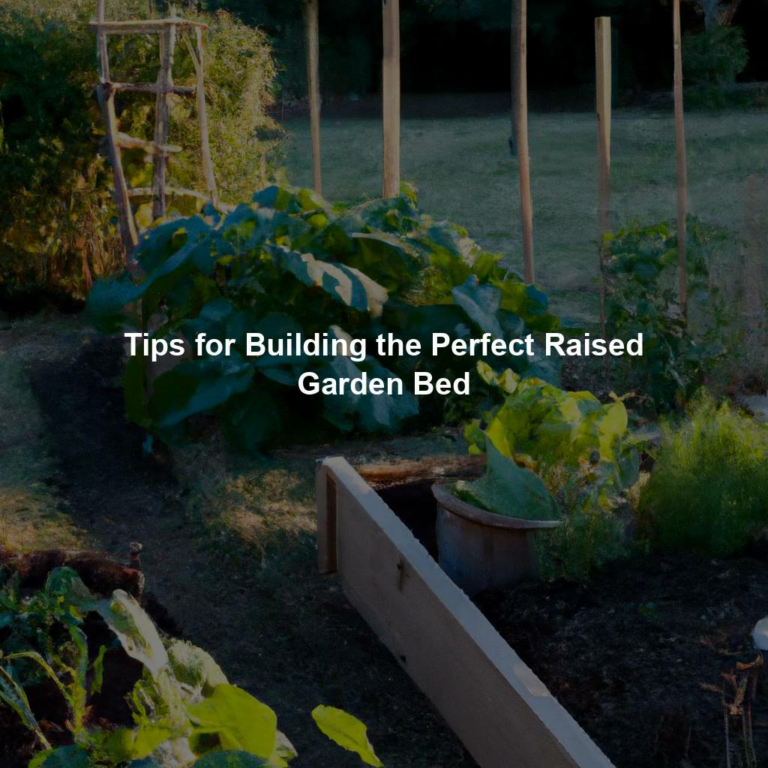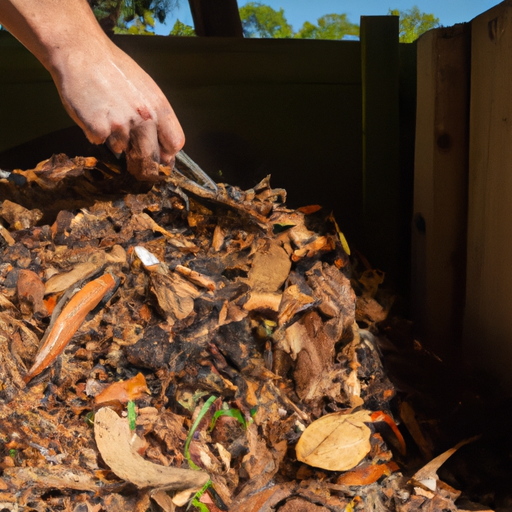If you’re looking to maintain a sustainable and organic garden, crop rotation should be at the top of your list. Rotating your crops is one of the best ways to keep soil healthy while preventing pests and diseases from taking hold in your plants.
By planting different crops each season, you can help break up pest and disease cycles while also replenishing nutrients in the soil.
Crop rotation involves switching out what type of plant grows in a specific area every year or two. This practice has been used for centuries by farmers as a way to increase yields and promote soil health.
In today’s world where sustainability is becoming increasingly important, this technique has become even more valuable. Not only does it reduce the need for chemical fertilizers and pesticides, but crop rotation also ensures that our gardens remain productive for years to come.
So if you’re ready to take your gardening game to the next level, let’s dive deeper into the benefits of rotating crops!
The Importance Of Maintaining Soil Health
Maintaining soil health is crucial to having a successful organic garden. As a Master Gardener, I cannot stress enough the importance of composting benefits and promoting healthy soil microorganisms.
Composting your kitchen scraps and yard waste not only reduces landfill waste but also provides nutrient-rich material for your garden. This helps improve soil structure, water retention, and overall plant growth.
Soil microorganisms play a vital role in breaking down organic matter into nutrients that plants can absorb through their roots. Adding organic matter to your soil encourages the growth of beneficial bacteria and fungi which help control pests and diseases naturally.
By taking care of your soil’s health, you are ultimately ensuring healthier plants that produce better yields year after year without relying on harmful chemicals or synthetic fertilizers.
Breaking Up Pest And Disease Cycles
As we learned in the previous section, maintaining soil health is crucial for a successful organic garden.
Another important aspect of sustainable gardening is crop diversity and companion planting.
Rotating your crops can help break up pest and disease cycles by reducing the buildup of pathogens in the soil.
Companion planting involves growing different plants together that have mutually beneficial relationships, such as herbs that repel pests or legumes that fix nitrogen in the soil.
By incorporating both strategies into your gardening practices, you can create a more balanced ecosystem within your garden and reduce your reliance on harmful pesticides and fertilizers.
So, next time you plan out your garden plot, think about how you can incorporate crop diversity and companion planting to improve the overall health and sustainability of your garden.
Replenishing Nutrients In The Soil
As a Master Gardener, it is important to not only rotate your crops but also replenish the nutrients in the soil.
One effective way to do this is through composting. Composting benefits both the environment and your garden by reducing waste and providing rich organic matter for your plants.
Another strategy is using cover crops, which have multiple advantages such as preventing erosion, improving soil structure, and fixing nitrogen levels.
By incorporating these methods into your gardening practices, you can ensure that your soil remains healthy and fertile year after year.
Remember to always prioritize sustainability in all aspects of your gardening journey.
Centuries-Old Practice Of Crop Rotation
After we’ve learned about replenishing soil nutrients, let’s dive into the centuries-old practice of crop rotation.
Crop rotation is a crucial aspect of sustainable organic gardening that involves planting different crops in the same plot each year to avoid depleting the soil’s nutrients and prevent pest infestations.
The benefits of crop rotation are numerous; it helps maintain soil fertility, reduces soil erosion, minimizes weed growth, and promotes biodiversity by attracting beneficial insects and pollinators.
However, implementing crop rotation can also be challenging as it requires proper planning and management to determine which crops to plant together based on their nutrient requirements and growing seasons.
Historical examples of successful crop rotations include Native American ‘Three Sisters’ method, where corn, beans, and squash were planted together for mutual benefit.
Overall, incorporating crop rotation into your garden plan will undoubtedly increase its productivity while promoting sustainability.
Promoting Sustainable And Organic Gardening Practices
As a Master Gardener, it is important to promote sustainable and organic gardening practices.
One of the best ways to do this is by rotating your crops. This practice involves planting different types of crops in different areas of your garden each season. By doing so, you can avoid soil-borne diseases that often build up over time when plants are continuously grown in the same spot. Additionally, crop rotation helps to maintain soil fertility as different plants have varying nutrient needs.
Another way to promote sustainability in your garden is by composting. Composting not only reduces waste but also creates a nutrient-rich fertilizer for your plants without relying on chemical fertilizers that harm the environment.
Lastly, reducing chemical pesticide use is crucial for promoting sustainability and protecting pollinators vital for our ecosystem’s health. Incorporating natural pest control methods such as companion planting or releasing beneficial insects can help keep pests at bay while minimizing negative impacts on the environment.
These simple yet effective practices can make a significant difference in creating a more sustainable and healthy garden environment for years to come.
Frequently Asked Questions
What Are The Benefits Of Crop Rotation?
To truly enhance the quality of your organic garden, it’s important to understand the benefits of crop rotation.
When you rotate crops in a parallel sequence, you can improve soil health and increase yield with ease.
This technique also helps prevent pests and diseases from invading your plants while promoting better nutrient management overall.
As a Master Gardener, I highly recommend incorporating this method into your gardening practice for optimal results.
How Long Should I Wait Before Planting The Same Crop In The Same Spot?
How long should you wait before planting the same crop in the same spot?
It’s a common question among gardeners who want to maintain good soil health and maximize crop yield. While there is no definitive answer, it’s generally recommended to rotate your crops every 2-3 years.
This allows time for the soil to recover from the depletion of nutrients caused by the previous crop and reduces the risk of pests and diseases building up in the soil. By rotating your crops, you can promote healthy soil and ensure more bountiful harvests year after year.
Can I Rotate Crops In A Small Garden Or Container Garden?
Imagine a small garden as a container of endless possibilities. The limitations may be obvious, but with the right techniques, it can yield an abundant harvest.
Crop pairing is key in maximizing space and ensuring that each plant gets what it needs to thrive. But what about rotating crops? Can you really do it in a small garden or even a container garden?
As a Master Gardener, I say yes! Container limitations should not stop us from practicing sustainable gardening methods such as crop rotation. With proper planning and careful selection of plants, you can still rotate your crops even in limited spaces.
Just remember to pair them appropriately and keep track of their growth cycle for optimal results.
How Do I Decide Which Crops To Rotate?
When it comes to crop selection, there are a few important factors to consider.
First and foremost is the health of your soil. Different crops have different nutrient needs, and rotating them helps ensure that no one type of plant depletes the soil too much.
Additionally, it’s wise to rotate crops based on their families (e.g. nightshades, brassicas) as this can help prevent disease buildup in the soil.
Finally, take into account which crops you want to harvest most often and plan accordingly so that you always have something growing fresh and ready for picking.
By carefully considering these factors when selecting what to grow each season, you’re well on your way to a successful garden with happy plants and healthy soil!
Do I Need To Use Organic Methods For Crop Rotation To Be Effective?
When it comes to crop rotation, many gardeners wonder if organic methods are necessary for effectiveness. The truth is that while organic techniques can certainly enhance the sustainability of your garden, conventional methods can still yield benefits as well.
Crop rotation helps prevent soil-borne diseases and pests from taking hold in your garden by alternating different types of crops each season. While organic practices like adding compost or cover crops can further improve soil health, simply rotating crops using conventional means can also lead to a healthier and more productive garden.
So whether you choose to embrace sustainable agriculture through organic methods or not, incorporating crop rotation into your gardening routine is always a smart move.
Conclusion
Well folks, it looks like we’ve reached the end of our journey through crop rotation. But before you go back to your gardens and start rearranging those veggies, let’s recap what we’ve learned.
First off, rotating your crops is a key component in maintaining a sustainable organic garden. By switching up where you plant certain vegetables each year, you can prevent soil-borne diseases, improve soil health, and reduce pests naturally. Plus, who doesn’t love a little variety in their veggie patch?
Now I know some of you might be thinking ‘But Master Gardener, my plot is so small! How on earth am I supposed to rotate anything?’ Well fear not my friends, even container gardens can benefit from a little switcheroo now and then. Just make sure to give your plants enough space and nutrients to thrive.
And finally, for all you non-organic growers out there – yes, crop rotation still works with conventional methods too. However, if you really want to take your gardening game to the next level (and impress all your neighbors), why not try incorporating more natural techniques into your routine? Trust me folks, Mother Nature knows best.
So there you have it folks – the ins and outs of crop rotation straight from yours truly. Now get out there and start shuffling those seeds around – Your garden (and future self) will thank you for it!
